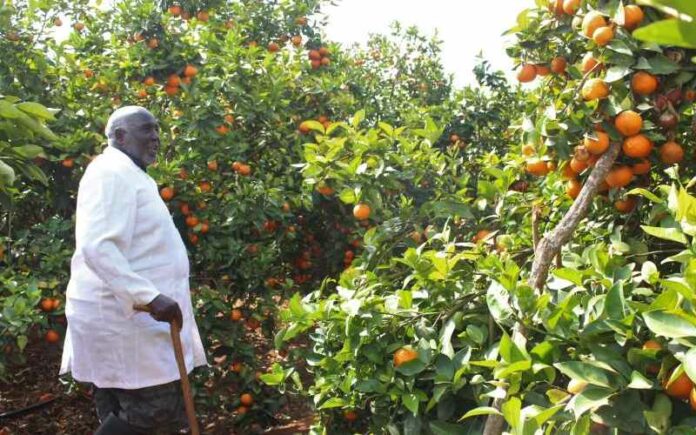Pixie oranges continue to become very popular among Kenyan consumers owing to their higher sugar content than the ordinary large oranges.
The fruits are also juicier, and their orange flavor is very sharp. Being a variety of citrus fruits, pixie oranges thrive in hot climatic conditions.
Currently, Makueni County leads in the production of this fruit, followed by the other Ukambani counties of Machakos and Kitui.
According to farmers growing the fruit, pixie demand is very high both locally and abroad that farmers can’t meet it.
Given the seedless nature of the fruit, the only way to propagate it is by grafting, with grafted pixie plants ready to produce fruits in the second year and mature after 3-5 years depending on how well they are taken care of.
Ecological requirements
Pixie thrives in a wide range of soils although they perform best in sandy loamy soils. Just like oranges, pixie thrives in areas with low and moderate rain. This means that it can perform well in arid and semi-arid areas. In dry areas, the plants should be watered regularly.
Planting
The pixie plant sprouts vigorously and farmers are advised to observe the correct spacing. A spacing of 4m x 5m is recommended with an acre occupying between 200 – 250 pixie trees.
When planting, farmers should mix the top soil with well-decomposed manure to improve soil fertility. However, in areas with clay soils, the top soil should be mixed with sandy or loamy soil and well-decomposed manure to improve drainage, aeration, and soil fertility.
The field should be weed free and farmers are encouraged to apply Mulchi and plant cover crops which minimizes the growth of weeds.
Peter Mwaka: Pixie farmer making more money than his combined 37-year salary
Pests and diseases
The fruits are susceptible to pests such as mites, aphids, fruit flies, and mealybugs, and diseases such as collar rot and twig blight. Grafted varieties are resistant to certain pests and diseases. In severe cases, chemical control should be employed.
Production and output
Pixies start bearing fruits in the second year after planting. When properly managed, an acre can give a a turnover of up to Ksh1.2 million per year. These fruits are sold at an average price of Ksh80 per kilo at the farm gate.
A well-tended tree will give 60 kilos of fruits in a year and an acre can accommodate 270 such trees.
According to agriculture firm RichFarm Kenya, the cost of starting a pixie farm is just one-time and would be about Ksh150,000.
Of this initial capital, you only need about Ksh100,000 for purchasing seedlings (around Ksh67,500) , planting labour (around Ksh33,000) and maintenance cost of Ksh50,000.
Rich Farm adds that once established, the farm will be generating income every year for the next 20 to 30 years.








